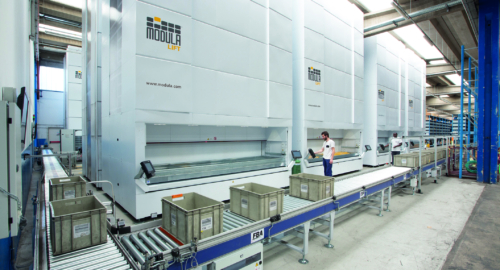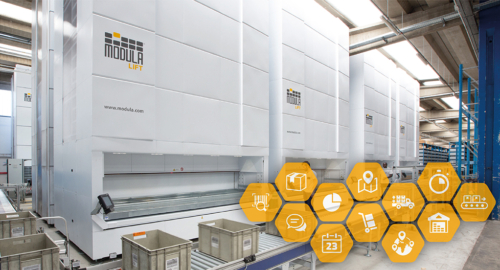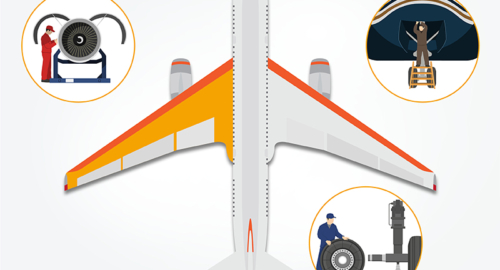Distribution logistics is the combination of physical facilities and activities which connect the sources of the product (production plants) to customers, while also coordinating the underlying information flow.
Basically, distribution logistics consists of five large components:
In this article, we will analyse the various types of distribution network.
The distribution network
“The distribution network is the set of warehouses, of different types and kinds, which operate in an organised, integrated manner to constitute the bone structure of the logistics system that gets the products handled (or manufactured) by the company to customers”.
In the past, a warehouse used to be considered as just a container. Nowadays, in the integrated approach to the logistics chain, warehouses are viewed as fundamental hubs in the logistics network, with functions defined by their specific location within the network.
In general, warehouses have four main operating functions:
- Storage
- Handling
- Stock monitoring
- Sorting of inbound/outbound goods by origin/destination
In terms of specific functions, there are three different types of warehouses:
- Plant warehouses
- Central warehouses
- Outlying warehouses
The plant warehouse is, basically, a container to which a production plant’s output is temporarily transferred. A plant warehouse is required because either the company produces on the basis of forecasts (for stock), and therefore needs to store the goods produced pending receipt of orders from customers, and/or the company needs to group together a certain quantity of product in order to fill the entire capacity of a means of transport (and thus optimise its use).
The central warehouse is basically a collection and distribution centre, necessary to “concentrate” different products to make them available in a single point. Normally, it receives loads of single products, or single lines, and dispatches loads of multiple products.
Lastly, the function of an outlying warehouse is very similar to that of a central warehouse (collection/distribution centre). However, its main task is to ensure rapid delivery to customers, and it is located close to them to facilitate this.
For further information about distribution and an understanding of how a network generally changes over a business’s lifetime, refer to the following article: The evolution of the distribution network. How is a new one designed?
Now we will take a closer look at the various network types.
Just one central warehouse
This is a simple distribution network consisting of just one large central warehouse, containing the stocks of all the products handled, from which deliveries are made to all the company’s final customers.
In general, this solution:
- Minimises warehouse operating costs (handling, order preparation, etc).
- Allows accurate monitoring of stocks.
- Simplifies management of transport missions, but does not always optimise their cost.
- This solution is suitable in particular for businesses which serve customers who are not too far away and/or who receive orders of fairly large size/high value.
A distribution centre plus a large number of branches
The second type of distribution network is fairly similar to the first, but differs from it in being more suitable for large commercial businesses which have a quite large number of branches or points of sale with a low storage capacity.
In practice, the distribution network consists of just one large central warehouse, which in this case can also be called a “distribution centre”, containing stocks of all the products purchased from the various suppliers and from which deliveries are made to the various branches or points of sale.
In general, this solution:
- Guarantees an excellent level of service.
- Allows reduction of overall stocks.
- Is fairly complex and sometimes expensive to manage.
It is particularly suitable for wholesalers, the large-scale retail trade and retail purchasing consortia.
A central warehouse and several outlying depots
This configuration is a quite common form of logistics organisation amongst production firms or commercial companies which do not have points of sale selling to the “final” consumer.
In practice, depending on their location and the size/composition of their orders, the company’s customers are served either directly from the central warehouse or from one of the various branches.
In general, this solution:
- Guarantees an excellent level of service.
- Raises stock levels a little (especially if they are not properly managed).
- Differentiates the service and costs depending on customers’ characteristics.
The solution is particularly suitable for some types of wholesalers, or single-plant production companies, of not especially large size, where the production department is close to the central warehouse.
Plant warehouses, central warehouse and outlying depots
This is a fairly complex configuration, suitable for fairly large manufacturing companies (or corporate groups).
The company’s customers may be served by different options/procedures, depending on their location and order composition/size, using a three-level network structure: plant warehouses, central warehouses and outlying warehouses.
In general, this system:
- Guarantees an excellent level of service.
- Raises stock levels a little (especially if they are not properly managed).
- Differentiates the service and costs depending on customers’ characteristics.
It is particularly suitable for organisations with several production locations, each producing specific products. Availability of the mix is guaranteed by the central warehouse, while swift delivery is achieved using the nearness to the market of the outlying warehouses.
No warehouses but just transit points
This is a fairly innovative configuration (only introduced a few years ago), which may seem very simple but which actually requires a great deal of organisation.
In practice, all the warehouses (outlying ones in all cases but sometimes the central one as well) are replaced by transit points. Transit points are basically warehouses without (or with only very low) stocks, where inbound goods from suppliers or plants are sent to customers immediately.
In general, the characteristics of this solution are:
- It guarantees an excellent level of service if it works properly.
- Fairly simple order management.
- Low stocks, sometimes riskily so.
- Complex IT and organisation required.
In general, this system is adopted by fairly large manufacturing or commercial companies.
Outsourcing
The last example of a distribution network we present is actually an anomalous variant of the traditional distribution network, although it is actually now quite widely used, also in Italy.
In practice, the traditional distribution network no longer exists, since all the physical distribution of goods is contracted to an external organisation (logistics firm).
In fact, even when distribution is outsourced, the distribution network still exists, except that it no longer belongs to the company that produces/sells the goods for distribution, so it may be “out of sight”. When establishing a partnership with a logistics firm it is important to find out about the distribution network it is able to provide.
7+1 Deadly Sins of the Warehouse



